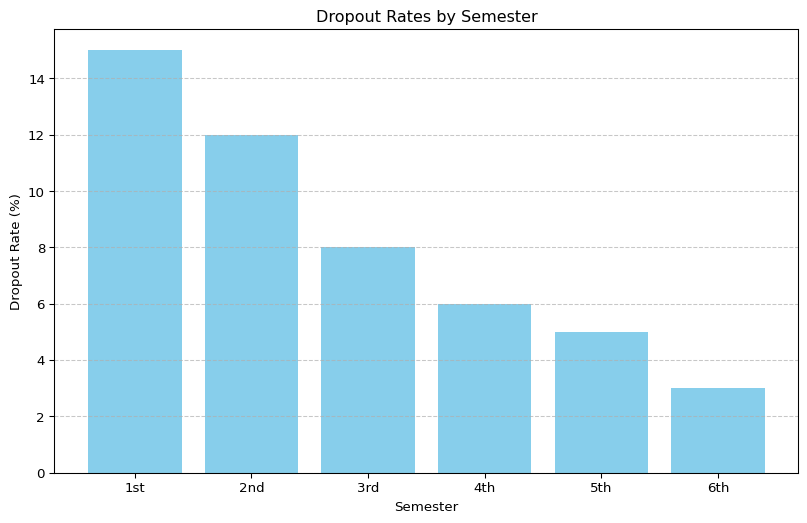
University Dropout Analysis
University Dropout Analysis
Introduction
This project examines the factors that contribute to student attrition in Business Administration programs. By analyzing patterns in student data, we can identify at-risk students and develop interventions to improve retention rates.
Data Collection
The dataset includes: - Academic performance metrics - Attendance records - Socioeconomic indicators - Survey results on student satisfaction - Course enrollment history
Methodology
I used the following analytical techniques: - Logistic regression to predict dropout probability - Cluster analysis to identify student archetypes - Time series analysis to detect critical periods - Correlation analysis to identify key factors
Key Findings
- First-year performance is highly predictive of dropout risk
- Students with part-time jobs over 20 hours/week show 45% higher attrition
- Attendance drops significantly 3-4 weeks before formal withdrawal
- Peer study groups reduce dropout rates by 30%
Visualizations
Recommendations
Based on the analysis, I recommend: - Implementing an early warning system based on first-month performance - Creating flexible scheduling options for working students - Expanding peer mentoring programs - Enhancing academic support during critical dropout periods
Conclusion
This analysis demonstrates that dropout patterns are predictable and interventions can be targeted to specific risk factors and time periods for maximum effect.